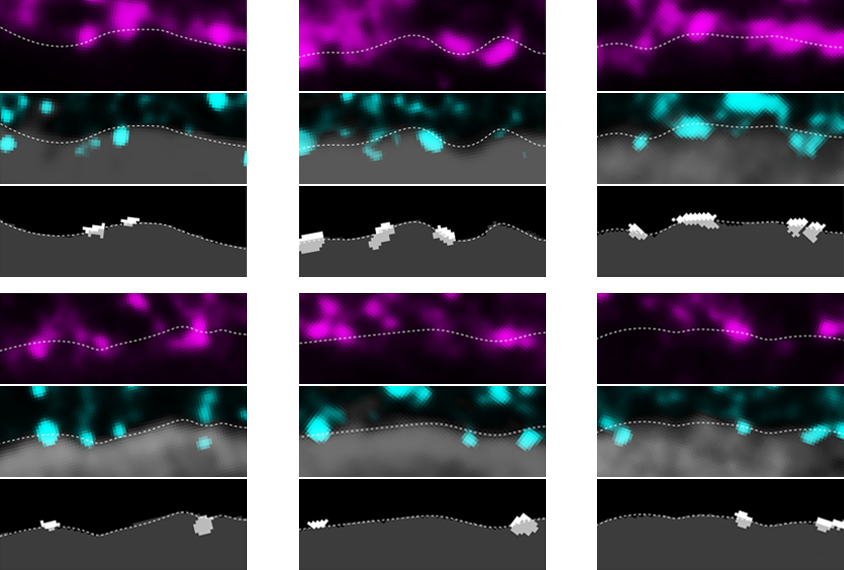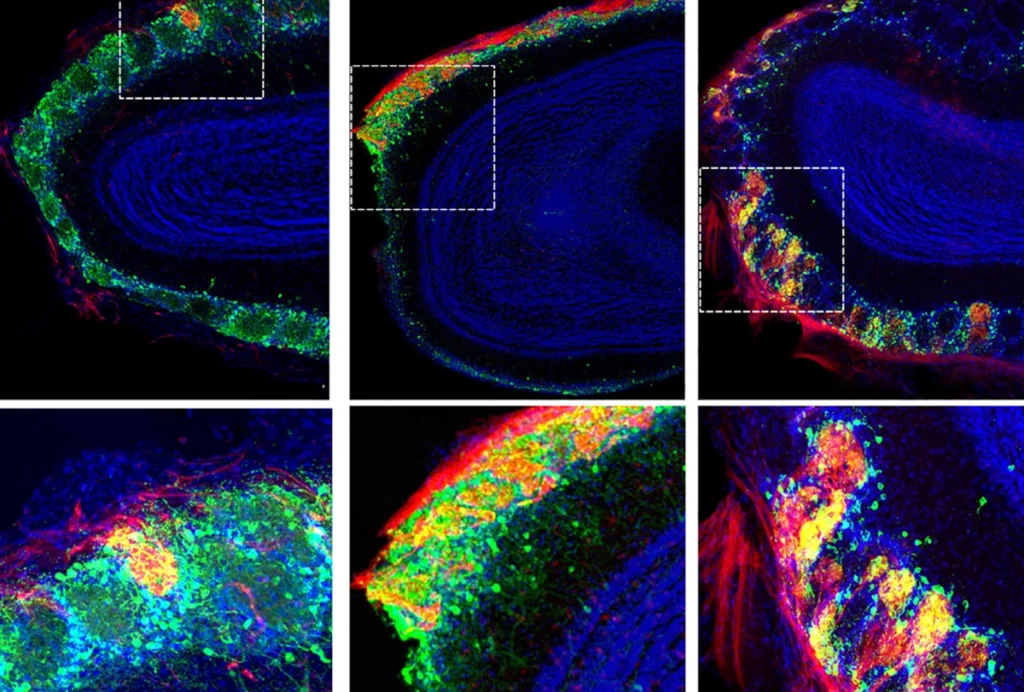Loss of the autism-linked gene TSC2 in parvalbumin interneurons causes these cells to form atypical synapses, according to a new study. As a result, neuronal circuits forged between the interneurons — which are inhibitory — and excitatory cells elsewhere in the brain may be particularly susceptible to disrupted development, the researchers say.
Parvalbumin (PV) interneurons and somatostatin (SST) interneurons develop from the same type of progenitor cell and share migration paths to the neocortex, where they occupy the same layers. Beyond those similarities, though, they target different cells for connection and play strikingly different roles within neuronal circuits.
These distinct wiring patterns stem, at least in part, from differences in how the two interneuron types express the autism-linked mTOR pathway, the new work suggests: Deleting one or both copies of TSC2 in inhibitory interneurons in mice, which alters mTOR signaling in the cell, changes how the PV interneurons — but not the SST variety — receive synapses from excitatory cells.
That hints at why the function of PV interneurons in particular seems to be altered in autism-linked conditions, as previous studies have found, says co-lead investigator Oscar Marin, professor of neuroscience at King’s College London in the United Kingdom. “There seems to be some convergence around this cell type,” he says.
M
utations in TSC2 or the related gene TSC1 lead to tuberous sclerosis. Both genes’ proteins suppress the mTOR signaling pathway, which mediates cell growth and proliferation, and their absence results in benign tumors throughout the body, including in the brain. People with tuberous sclerosis also often have intellectual disability and epilepsy, as well as an increased likelihood of being diagnosed with autism.In the new study, the researchers found that for both PV and SST interneurons, loss of TSC2 increased mTOR signaling in the mice’s brain tissue, resulting in larger cells than in controls. But unlike SST interneurons, PV interneurons missing one copy of the TSC2 gene — and to a greater extent, those missing both copies — also showed altered synapse development: Although the connections from PV interneurons onto excitatory neurons were unaffected, those from excitatory cells back onto PV cells were denser than average.
To form synapses with excitatory cells, postsynaptic PV interneurons rely on ERBB4 receptors, previous research from the group showed, and the new study suggests that these receptors may explain the difference in the two cell types. Loss of the receptor’s function results in an overactivation of TSC2, which blunts the mTOR pathway and downregulates the production of certain proteins at the site of a potential synapse. By contrast, activation of the receptor increases their expression. PV interneurons that expressed fewer of those synaptic proteins had a lower density of synapses formed by excitatory neurons, the researchers reported in December in Science.
“This would suggest that protein synthesis is a cellular mechanism for modifying the contribution of specific synapses in a circuit,” says Emily Osterweil, professor of molecular neuroscience at the University of Edinburgh in Scotland, who was not involved with the work. That’s something researchers have speculated, she says, but has been difficult to illustrate in vivo.
And because production of the relevant proteins happens at the site of these excitatory-to-inhibitory junctions, there seems to be something important about them being translated locally, says co-lead investigator Beatriz Rico, professor of developmental neurobiology at King’s College London.
That conclusion “might be a little premature,” notes Eric Klann, professor of neural science at New York University. The proteins Rico and her colleagues identified do seem to be necessary for synapse formation, but the study does not demonstrate that they must be synthesized locally, he says.
S
till, the study’s findings raise interesting questions about the biology of other neurodevelopmental conditions, Klann says. “It would be nice to know whether this kind of synapse-specific change during development is present” in other animal models linked to autism, he adds.The results also “strengthen the argument that mTOR could be a convergence point for several forms of autism,” says Mustafa Sahin, professor of neurology at Harvard Medical School and Boston Children’s Hospital, who was not involved in the work.
Moving forward, the team will investigate whether the loss of TSC2 has a similar effect on synapses in human brain tissue, Marin says. “That will be reassuring that we are onto something that ought to translate into patients. Because the ultimate goal is not just only to understand the biology, but to find a way into identifying new therapies.”


